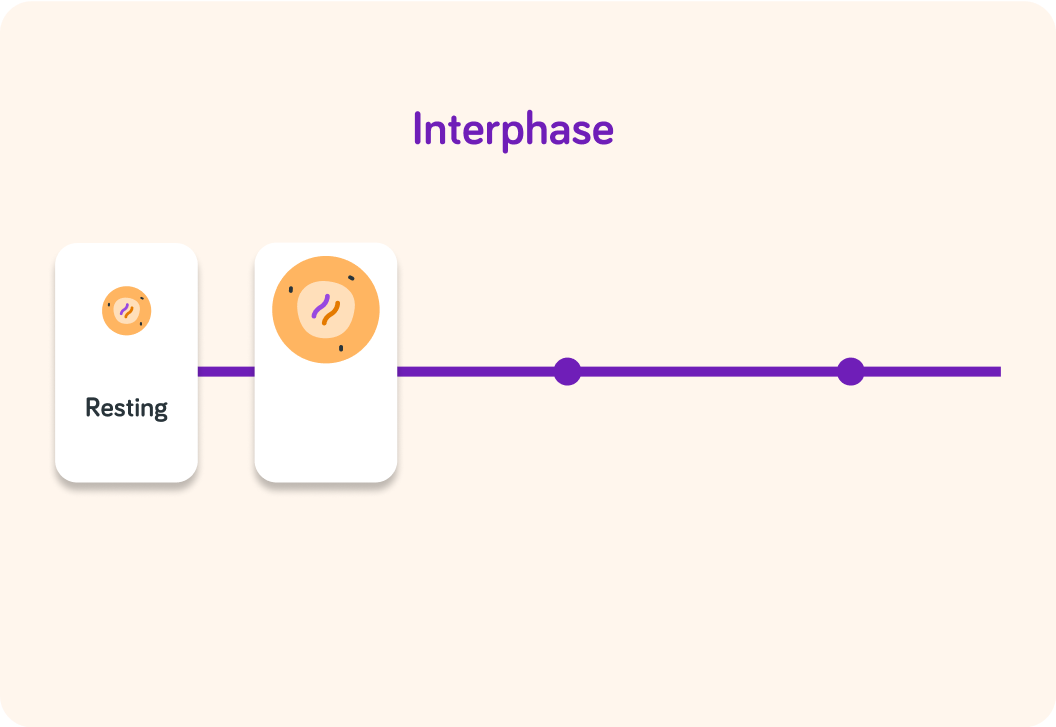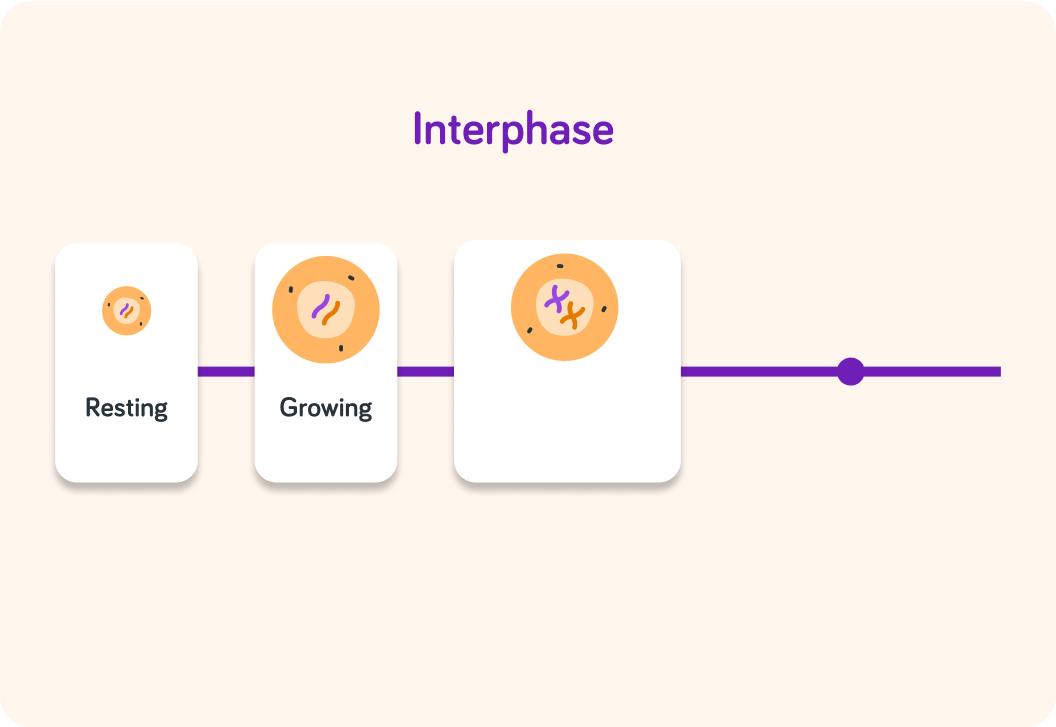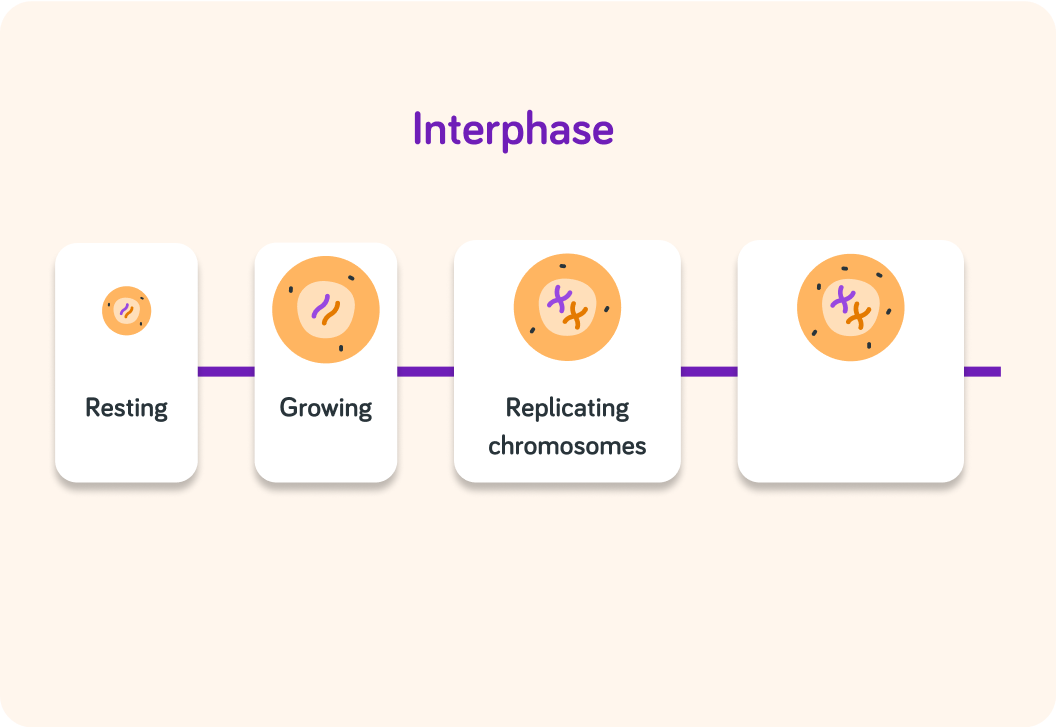YOU ARE LEARNING:
The Cell Cycle

The Cell Cycle
Cells go through a series of events that repeat itself for it to grow and divide.
During this lesson, this cell cycle diagram will get filled out bit by bit
For now, you can see that the cell cycle consists of 3 main phases.

What is the ultimate outcome of the cell cycle?
A) A single parent cell B) Two daughter cells


True or false? The daughter cells are identical to each other.


True or false? The two daughter cells are identical to the original parent cell.


So the outcome of the cell cycle is that a parent cell becomes two identical daughter cells
This means that you start with 1 cell and end up with 2 cells on total. The parent cell literally splits itself and becomes the daughter cells!

Why do you think a cell might multiply into identical daughter cells? Pick 2 options.

You can select multiple answers
What do we call the first phase of the cell cycle?


This image has zoomed in on the interphase
There are 4 stages to the interphase.

What do you think the cell might do at the "resting" stage?
A) Split itself B) Replicate its organelles C) Build up food stores


In the next stage, the cell __________.
A) shrinks B) grows bigger C) explodes


In the third stage in the interphase, the cell replicates something inside the nucleus. What is it?
A) Chromosomes B) Mitochondria C) Ribosomes


In the fourth and final stage of the interphase, the cell replicates...
A) itself. B) organelles in the cytoplasm. C) food stores.


So the interphase consists of 4 stages
During resting, the cell builds up food stores. Then the cells grows bigger. Then the cell replicates its chromosomes in the nucleus. Finally, the cell replicates organelles, like mitochondria and ribosomes.

The second phase of the cell cycle is called "mitosis"
In this phase the chromosomes separate to prepare for the cell to split. Much more detail on mitosis in later lessons.

What is the last phase of the cell cycle called?


What happens during cytokinesis?
A) The parent cell finally splits. B) The daughter cells fuse into a parent cell. C) The cell dies.


Summary! During the cell cycle, cells split themselves into two
The original cell is the parent cell and the two new cells are daughter cells.

Daughter cells are identical to each other and to the original parent cell
The body needs new identical cells for growth and repair.
It might also need them for asexual reproduction, which is when organisms reproduce by basically producing clones of themselves.

There are 3 phases in the cell cycle
Interphase Mitosis Cytokinesis

The interphase has 4 stages
First the cell is resting and building up food stores. Second, the cell grows bigger. Third, the cell replicates its chromosomes. Fourth, the cell replicates organelles, like mitochondria and ribosomes.

Mitosis
During mitosis chromosomes separate to prepare for the cell to split.

Cytokinesis
During cytokinesis, the parent cell finally splits.

Why do we call it a "cycle"?
Because each of these daughter cells may now become a parent cell that can enter the same cycle and itself split into two daughter cells.

